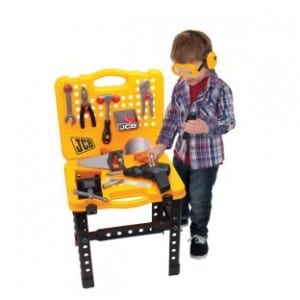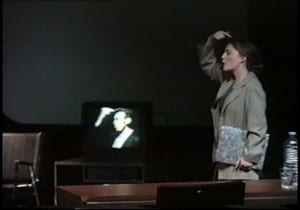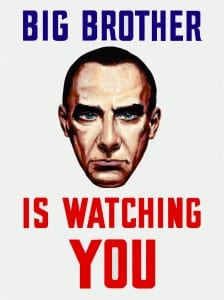Freud discusses the “yield of pleasure involved” ((Freud, S (1991) On Metapsychology. London: Penguin. p, 283.)) in play. He looks past the fun factor and into the reasons that we play. In his example he looks into a young boy who has invented a game in which he throws his toys away in the hope that they will be returned, he also chucked a wooden reel with string tied around it out of his cot and then pulled it back in. Freud had decided this was due to his “instinctual renunciation … which he had made in allowing his mother to go away without protesting” ((Freud, S (1991) On Metapsychology. London: Penguin. p, 285.)). I am myself playing with the idea of looking into to how play is preparing us for when we grow up, specifically girls becoming women.
This is very obvious when we look at children’s toys, such as in the Argos catalogue in the girls toy section you will find dolls and pretend kitchens,
dolls and pretend kitchens,  “Chad Valley Pretend Play Electronic mini Kitchen” ((Argos.co.uk (2013) Buy Chad Valley Pretend Play Electronic Mini Kitchen at Argos.co.uk – Your Online Shop for Toys under 10 pounds, Cooking role play, 2 for 15 pounds on Toys.. [online] Available at: http://www.argos.co.uk/static/Product/partNumber/9059430.htm [Accessed: 2 Mar 2013].)) where as in the boys section you will find cars, and toy work benches,
“Chad Valley Pretend Play Electronic mini Kitchen” ((Argos.co.uk (2013) Buy Chad Valley Pretend Play Electronic Mini Kitchen at Argos.co.uk – Your Online Shop for Toys under 10 pounds, Cooking role play, 2 for 15 pounds on Toys.. [online] Available at: http://www.argos.co.uk/static/Product/partNumber/9059430.htm [Accessed: 2 Mar 2013].)) where as in the boys section you will find cars, and toy work benches,  “JCB Pack Away Workbench” ((Argos.co.uk (n.d.) Buy JCB Pack Away Workbench at Argos.co.uk – Your Online Shop for Building role play.. [online] Available at: http://www.argos.co.uk/static/Product/partNumber/3888559.htm [Accessed: 2 Mar 2013].)). This shows how even from a young age we are pushed to be a specific type of person, girls to become women with strong maternal instincts and to be the cleaner and cook for a male hunter gatherer type, and boys pushed to be masculine and provide for women. Even with the feminist movement beginning in the mid 18th century and still going strong now, gender stereotypes are still common today.
“JCB Pack Away Workbench” ((Argos.co.uk (n.d.) Buy JCB Pack Away Workbench at Argos.co.uk – Your Online Shop for Building role play.. [online] Available at: http://www.argos.co.uk/static/Product/partNumber/3888559.htm [Accessed: 2 Mar 2013].)). This shows how even from a young age we are pushed to be a specific type of person, girls to become women with strong maternal instincts and to be the cleaner and cook for a male hunter gatherer type, and boys pushed to be masculine and provide for women. Even with the feminist movement beginning in the mid 18th century and still going strong now, gender stereotypes are still common today.
There is a pressure on women to want children and a husband, it is expected for a woman to put her career on hold and raise a family; less than a century ago most women didn’t have jobs but were simply home and baby makers. Many men believe that the perfect woman will be waiting at the door with a sandwich and in sexy underwear. This ideal is perpetuated by the continuation to believe that girls should be dressed in pink and have toy vacuums, were as boys should be running around fields in mud and wrestling. Dorothy Allison states “Class, race, sexuality, gender-and all other categories by which we categorize and dismiss each other- need to be excavated from the inside” ((Eagly, A. and Beall, A., et al. 2004, The Psychology of gender. New York (N.Y.) [etc.]: Guilford Press, p.1.)) It is becoming more and more acceptable for girls to join in typical boyish activities and boys to do girly activities. Although this has created a new genre of gender, such as a girl that enjoys sports rather than playing princess’s is a tomboy, and boys that enjoy playing with dolls rather than climbing trees are camp these terms which are regularly used in derogative manner between children.
I remember my parents not pushing me to be a feminine girl and I became a tom boy there’s no issue with that and in primary school people were very accepting of this. I mainly had male friends and when I started secondary school this became an issue with other girls they began to suggest to people that I was a slag and this was a turning point for me. I began to make more of an effort to be friends with girls and become more girly, I started wearing make-up and dresses and skirts. This was me acting to fit in and eventually it’s just became natural and a part of who I am.
In Kira O’Reilly’s “Cut Piece” she asked the audience to cut her with a scalpel, and those that refused would then put plasters on cuts created by other audience members. This gives the audience the feel of creating something themselves as well as them leaving their mark. She used this in a durational way that built a bank of cuts and plasters all over her body, leaving physical evidence that she had performed. I’m looking to use myself as a canvas in a durational way, as Tracey Warr looks at a “significant shift in artists’ perceptions of the body, which has been used not simply as the ‘content’ of the work, but also as canvas, brush, frame and platform.” ((Warr, T., & Jones, A. (2000). The artist’s body. London, Phaidon. p, 11.)).. I am going to combine both the child and adult. I will create this by using both children’s make-up (that cheap sticky cream stuff) and my own make-up, only applying the children’s make-up with my left hand (non-writing hand) and the adult’s make-up with my right hand. This will hopefully create the affect of a child playing dress-up, rather than an adult pretending to be a child. I will apply the make-up to a specific side of my face and build on it throughout the 4 hours. I will offer to do the make-up of the audience and if they refuse will allow them to apply make-up on me.
I am hoping the audience will leave with the sense of creating something and leaving something behind for others to find. Can we create this sense elsewhere as I know other groups are giving things to their audience? But what can we allow them to leave as there are obvious limitations such as graffiti, but can we create a guest book like you would find in hotel for them leave a message in for others to find?




